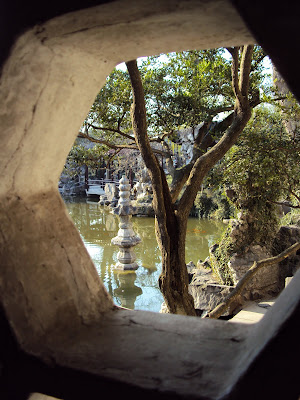 ...it's a cell phone tower
...it's a cell phone toweralthough for all the trouble to make it look convincingly like a tree up top, they could at least recess the base in the ground a little more and bury it in dirt or mulch ;)
The one aspect I remember and liked best about the city was the diverse collection of red lanterns everywhere.




On our way out of Nanjing, we crossed the famous Yangtze River Bridge. It is over 4 miles long, 4 lanes wide, and has an upper level for cars and a lower level for trains. This was a major feat of engineering at the time and still serves as a source of pride amongst the locals.


There were hundreds of barges floating down the Yangtze River, carrying sand and gravel to feed raw supplies to the growing skyline. The barge in the foreground is full of gravel and weighted down low to the waterline while the same ships in the background return empty and ride about 20 feet higher in the water.

the support columns of the Yangtze River Bridge that seem to extend to infinity
Here are some other random pics I like from Nanjing, but I failed to tie them into the storyline:
 a jade dragon for sale
a jade dragon for saleNanjing was the last city of our tour. We returned via bus to Shanghai and had an extra day and a half to kill before boarding our flight home.....so of course we made the most of it and squeezed in a few more things before heading home. (which will be the topic of our next and final blog about the China trip)












































